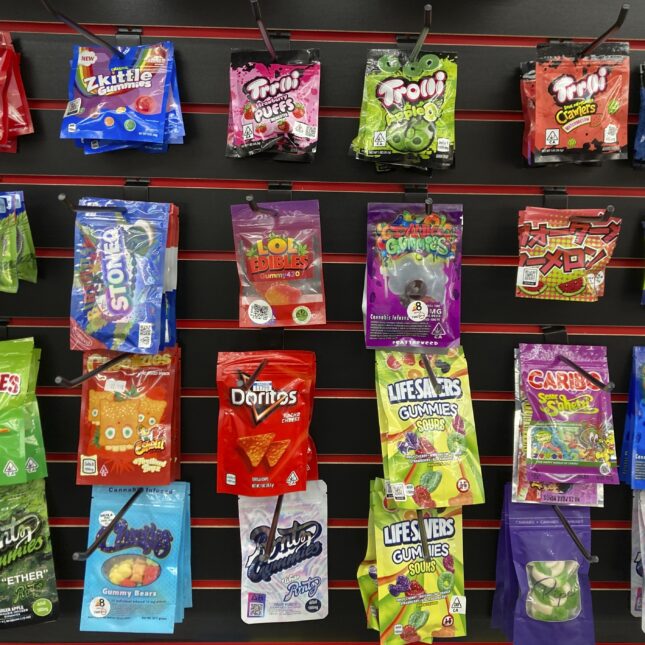
WASHINGTON — In the last year, an estimated 11% of high school seniors have used Delta 8 THC, according to a new report published Tuesday in the Journal of the American Medical Association.
Delta 8 THC is a quasi-legal psychoactive version of cannabis, which has skyrocketed in popularity after a loophole found in a 2018 federal law allowed it to be sold nationwide without the same restrictions placed on traditional marijuana. While legal marijuana is only sold at licensed, adults-only dispensaries, Delta 8 products are currently sold online, at gas stations and smoke shops, and in many states where traditional marijuana is entirely illegal. There is also no federal minimum age to purchase Delta 8 products.
Tobacco vape manufacturers known to be popular with young people, including Puff Bar, are now manufacturing their own Delta 8 THC vapes as well. Delta 8 products are also commonly available in edibles resembling snack foods like Flamin’ Hot Cheetos, gummy worms, and Pop Rocks.
The new data were gathered as part of the 2023 “Monitoring the Future” survey, which is conducted annually and funded by the National Institutes of Health. The survey provides some of the first concrete evidence that Delta 8 products are making their way into the hands of kids. Monitoring the Future did not ask about Delta 8 use in previous years.
While 11.4% of the 2,186 respondents surveyed reported using Delta 8 in the last year, 68.1% of users reported using the product more than three times, and 16.8% of users reported using the product more than 40 times.
The rate of Delta 8 usage among high school seniors still appears to be lower than that of marijuana use overall. Just over 30% of survey respondents reported using traditional marijuana in the last year, according to the Monitoring the Future survey. Over 90% of Delta 8 users also reported using traditional marijuana.
The rapid rise in the popularity of Delta 8 has nonetheless already caught the attention of NIH officials.
“11% is a lot of people — that’s at least one or two students in every average-sized high school class who may be using Delta-8,” said Nora Volkow, the director of NIH’s National Institute on Drug Abuse. “We don’t know enough about these drugs, but we see that they are already extremely accessible to teens.”
There’s little research on the health effects of Delta 8 compared to traditional marijuana. However, multiple studies have shown that adolescent use of cannabis is associated with impaired cognitive development. The FDA has warned that Delta 8 products may also contain harmful contaminants not found in traditional marijuana because of the process used to create the drug, which typically involves boiling CBD with a solvent, like heptane.
States have been rapidly trying to respond to the Delta 8 boom. More than a dozen have already banned the drug. Just last week, the Florida legislature voted to institute a statewide ban. State bans appear to be having an effect on young people’s usage of the product. Delta 8 usage was lower among high schoolers in states where the product was banned or restricted, according to the JAMA analysis.
The Food and Drug Administration has also made some attempts at cracking down on Delta 8 companies, though its efforts have been meager compared to the size of the industry. In 2023, the agency sent so-called warning letters to 10 companies selling Delta 8 edible products, arguing that the companies were illegally adding an unsafe additive to their food products, according to STAT’s analysis of publicly available information.
The Federal Trade Commission has also sent cease-and-desist letters to companies selling Delta 8 products that resemble snack foods popular with kids. The agency has argued that the practice violates federal law, “which prohibits unfair or deceptive acts … including practices that present unwarranted health or safety risks.”
STAT’s coverage of chronic health issues is supported by a grant from Bloomberg Philanthropies. Our financial supporters are not involved in any decisions about our journalism.
To submit a correction request, please visit our Contact Us page.









